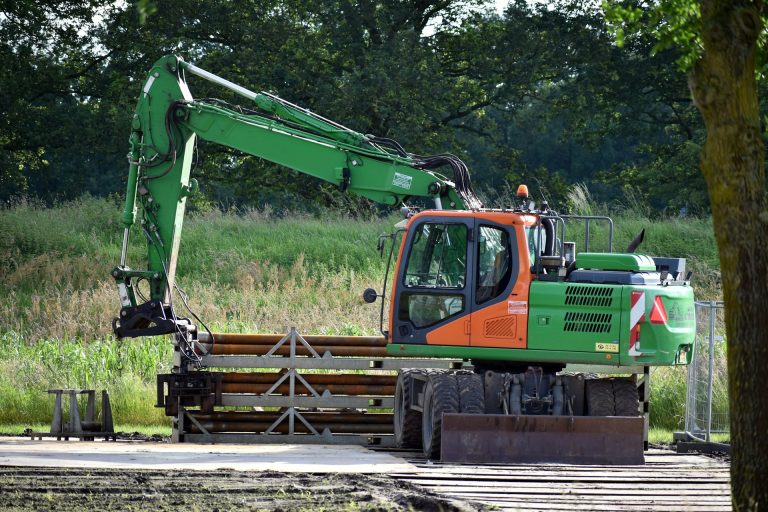In the industrial and construction sectors, machinery lifting is an essential operation that plays a pivotal role in moving heavy loads. However, the inherent risks of lifting operations can lead to serious accidents if not managed properly. Prioritising safety in machinery lifting is not just a regulatory requirement but a moral obligation to protect workers and ensure operational efficiency.
Understanding the Risks
Lifting operations expose workers to various hazards, including:
- Falling Objects: If loads are not secured correctly, they can fall, threatening personnel working below.
- Equipment Failure: Malfunctioning lifting equipment, such as cranes or hoists, can lead to catastrophic accidents.
- Human Error: Mistakes in judgment or a lack of training can result in unsafe lifting practices.
- Environmental Conditions: Weather, uneven ground, or obstructions can exacerbate risks during lifting operations.
Recognising these risks is the first step towards implementing effective safety measures.
Best Practices for Machinery Lifting Safety
- Comprehensive Risk Assessment
Before any lifting operation, a thorough risk assessment must be conducted. This assessment should identify potential hazards, evaluate risks, and establish control measures to mitigate them. Involving all stakeholders—operators, supervisors, and safety officers—in this process can provide diverse insights and enhance overall safety.
- Proper Training and Certification
All personnel involved in lifting operations should receive appropriate training. This includes operators of lifting machinery, ground crew, and signallers. Training should cover:
- Understanding equipment capabilities and limitations.
- Safe rigging techniques.
- Emergency procedures in case of equipment failure or accidents.
Regular refresher courses and competency assessments should also be conducted to ensure that skills remain current.
- Regular Equipment Maintenance and Inspection
Maintaining machinery in optimal condition is critical for safe lifting operations. Companies should establish a routine maintenance schedule and adhere to manufacturer guidelines. Regular inspections of lifting equipment—such as cranes, slings, and hoists—should be performed to identify wear and tear or potential issues before they lead to failure. Any defective equipment should be taken out of service immediately.
- Clear Communication
Effective communication among team members is vital during lifting operations. Establishing a standard set of hand signals or using radios can help maintain clear lines of communication, especially in noisy environments. Designating a competent signaller to direct the lifting operation can further enhance safety, ensuring that all team members know movements and potential hazards.
- Load Assessment and Rigging
Proper load assessment is crucial to ensure that lifting equipment can handle the weight and size of the load. Operators should always know the weight of the lifted load and ensure it is within the limits of the equipment being used. Furthermore, the rigging used to secure the load must be appropriate and correctly attached. Poorly rigged loads are a common cause of accidents.
- Implementing Safety Zones
Establishing safety zones around lifting operations can help prevent accidents. These zones should be clearly marked and restricted to authorised personnel only. Barriers or warning signs can alert others to stay clear of the area during lifting operations, reducing the risk of accidents.
- Monitoring Environmental Conditions
Lifting operations should be assessed against environmental factors such as weather conditions, ground stability, and visibility. Operations should be suspended in adverse conditions, such as high winds or rain, which could compromise safety.
Emergency Preparedness
Despite taking all necessary precautions, accidents can still occur. Therefore, having an emergency response plan is essential. This plan should include:
- Procedures for reporting accidents.
- First-aid protocols.
- Contact information for emergency services.
- Regular drills to ensure all personnel know their roles in an emergency.
The importance of safety in machinery lifting cannot be overstated. By implementing best practices and adhering to safety protocols, machinery lifting companies can significantly reduce the risk of accidents and protect their workforce. A proactive approach to safety—through risk assessment, training, regular maintenance, and clear communication—creates a safer working environment and fosters a culture of safety that permeates the organisation.
Ultimately, prioritising safety in machinery lifting is not merely about compliance; it is about valuing human life and ensuring that every worker returns home safely at the end of the day. Emphasising these principles will safeguard employees and enhance productivity and operational efficiency in the long run.


